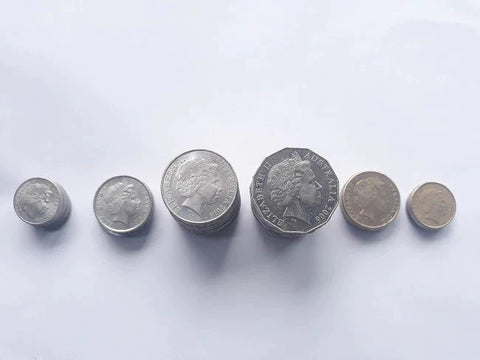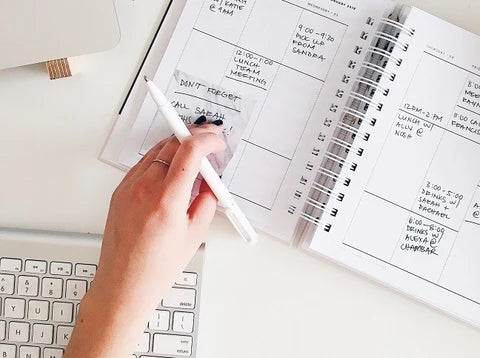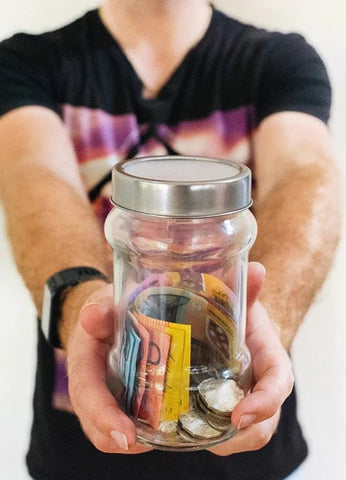Winning the next project is always a challenge...
Get it right, and you’ve landed a nice job with good margin. Get it wrong though, and you can soon find yourself in hot water.
After 12 years as a Builder, I’ve had my fair share of successes and failure.
Here’s my top tips on successfully winning tenders for profitable business.
1. You’ve got to be in it, to win it!
To give yourself a shot at winning new business, you first need to know what’s out there.
A great way to monitor upcoming tenders, is to sign up for services like Tenderlink (www.tenderlink.com.au). You can set up alerts so your notified when new opportunities arise, giving you the opportunity to submit a tender or pass.
2. Get yourself on preferred supplier lists
Get in touch with some bigger Contractors and ask about their preferred supplier lists.
You will typically be asked to submit a proposal, along guidelines they provide.
You can go large, with companies like Lend Lease and Brookfield’s or, look for middle-tier firms with more favourable payment terms.
Either way, remember you don’t have to bid on the business, but, you have to be aware of what’s coming up to have any chance of landing those attractive contracts.
3. Make sure it’s in your capacity
Make sure you can handle the project before you bid for it. In particular, consider two aspects:
Finances: You need enough cash-flow to support the project – always aim to leave at least a 30% buffer to give yourself some breathing space (and prevent sleepless nights).
Do you have the right team: Sure, you have to stretch yourself from time to time, but be wary of taking on projects where you need to bring in too many new subbies (who’s work you haven’t experienced before) that could leave you exposed if things go wrong. Aim for at least 80-90% of your team for the project to be repeat subbies. And be careful who you pick – look for experience and recommendations.
4. Do a proper budget
Don’t be tempted to wing it because your too busy doing other things – it’s always the one you don’t fully understand that catches you out (as I know well from experience – but that’s a story for another day!)
Take your time and use your subbies to get a proper fixed price.
Talk to people like skipbinhireaustralia.com who can give you firm pricing on skip bins, to give yourself an accurate cost assessment.
5. Don’t just offer the lowest price
Not only does this leave you exposed if you win the project, it may also lose you the business.
I’ve lost tenders in the past because I was the lowest price. On several occasions the client told me afterwards they felt I didn’t know the project well enough, or I would be charging more.
And in hindsight, I probably would have had a lot of sleepless nights had we picked those projects up (not to mention potentially losing money).
Ask yourself if you want a reputation for being the cheapest or, a reputation for providing top quality work at a fair and reasonable price.
If the answer is the latter, read on for some tips to position yourself that way:
6. Be honest and honorouble
Ultimately, it’s about building trust. If a client is considering handing over hundreds of thousands or even millions of dollars to you, they need to feel their project is in good hands.
If you see a problem, tell the client. If you think they have been misled, tell them. If you promise to meet a deadline, meet it.
It sounds simple, but sadly, the few cowboys out there give the quality operators a bad name. So the more you can do the dispel that image the better.
And most importantly, this is what will keep your clients coming back.
7. Show understanding of the project
Get as much detail as possible about the project. The better you understand the project, the better you can price it, the more comfortable you will feel and, the more the client will feel comfortable with you.
So ask questions, go and see the site several times and talk to all the relevant people until you have a full understanding.
8. Go over and above the tender specs
You won’t be the only one bidding for the project of your dreams, so be prepared to go the extra mile to secure it.
This means doing more than the bare minimum.
For example, a tactic we used successfully on many occasions, was to put forward a whole set of draft 3D plans. Even if the tender spec only asked for 2D drawings.
This meant an extra investment on our part, but it showed understanding and helped us secure a lot of business.
9. Meet the prospect face to face
A tender document is one thing, but nothing beats a face to face meeting. You want the client to see who you are and that you are trustworthy and know your stuff.
So make the effort to meet them before you submit a tender.
And use the opportunity to ask them questions about what they really want (often stuff that can be put on a piece of paper) which puts you in great position to demonstrate understanding and go that extra mile.
10. Deliver your tender on time
Sounds simple, but it's often missed. Nothing irritates a client more than late tender submissions. Your client wants to know you can deliver an expensive project on time. So if you can’t even submit a document on time, it doesn’t bode well.
11. Follow up after submission and keep in touch with the prospect
If they have any doubts about your tender, you want to be the first to know, so you can address it before they make a final decision.
Once it’s in, don’t just sit back and wait (like everyone else does) – get on the front foot. Call the client to make sure they received the document and offer to answer any questions. If you don’t hear back for a while, call again to check in “anything else you need to know, just ask”.
Keep that rapport building going and be persistant whilst respectful and you'll be in good stead.
12. Be Prepared to Negotiate
Rarely have I won a tender at first pass. There is almost always a period of negotiation.
My top tip? Don't rush into making concessions just to win the project. I’ve done this in the past without properly checking the revisions and ended up losing money.
If the client wants to negotiate, listen to their suggestions, take them away and see if you can accommodate them. Sleep on it overnight if need be and respond with a clear head.
13. Don’t be afraid to walk away
If the client is pushing you and your gut is telling you no, then walk away without a moments hesitation and your head held high.
No matter how much you want that project, if doesn’t stack up, don’t take it on.
Trust me, there is nothing better than turning down an unprofitable project. Even from the point of view of your own self-respect.
And it can work in your favour. On one of our largest projects, I first turned the client down. A few days later they got in touch and told me they really respected my decision and they wanted us to do the work…at the price we proposed. And that ended up being the start of a 5 year relationship.
14. Get Feedback
Whether you win or lose a tender, always get feedback so you can improve going forward (and increase your win rate).
Ask questions like;
- What did we do well?
- What could we do better?
And if you are dealing with a commercial client, don’t stop there.
Set the rules of engagement going forward; “It’s disappointing we didn’t win, but we’d love to keep in touch for future opportunities. Can I call to touch base in 3-6 months?”
And of course, if you say you will call, CALL!
I hope you found this useful!
And don’t forget to sign up to Trade Secrets, our Newsletter and Blog.
Coming Soon:
- 10 Top Tips to Finding and Managing Subbies











